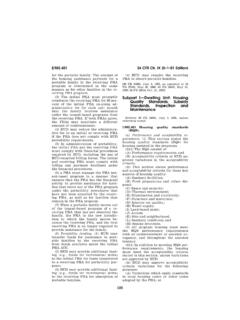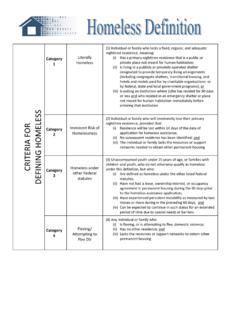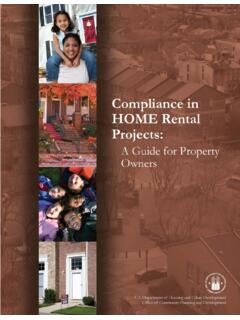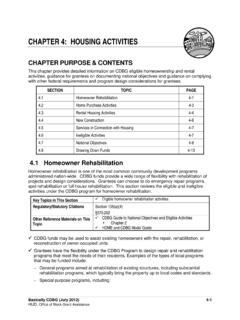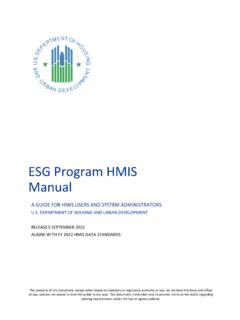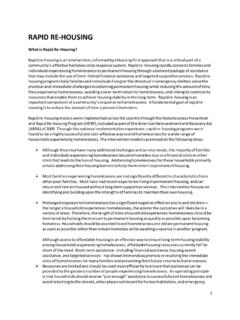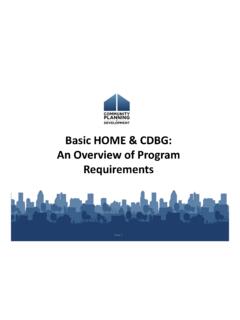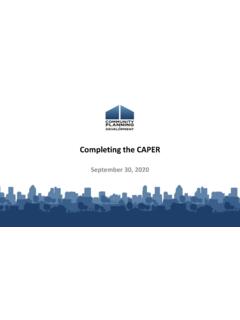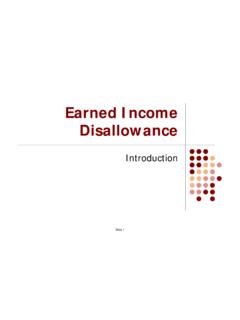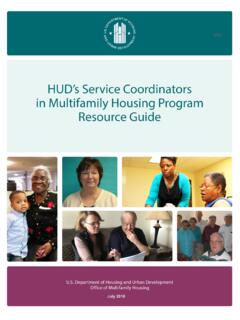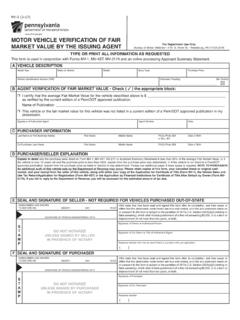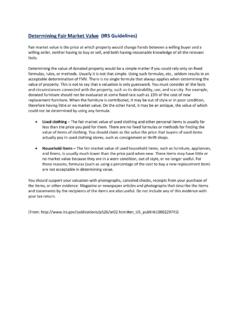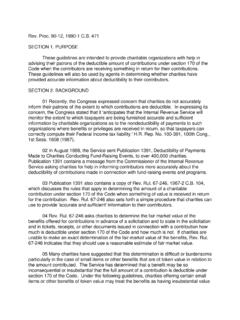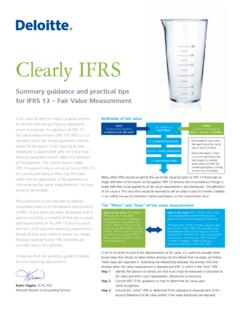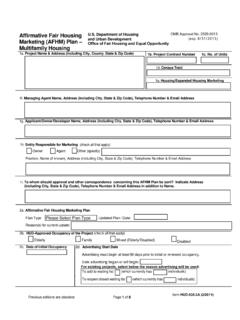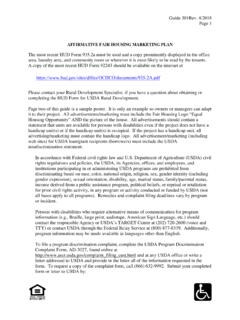Transcription of Rent Reasonableness and Fair Market Rent Under the …
1 RENT Reasonableness AND fair Market RENT Under THE CONTINUUM OF CARE PROGRAM ABOUT THIS RESOURCE Using Continuum of care (CoC) Program funds for rental assistance and leasing requires an understanding of and adherence to rent Reasonableness standards to determine whether a specific unit can be assisted. Recipients and subrecipients also need to understand the relationship between rent Reasonableness and the fair Market Rent (FMR). This resource provides an explanation of both concepts and describes how to determine and document compliance with each for units in which program participants will reside. CoC Program recipients and subrecipients can use this resource to develop policies, procedures, and documentation requirements to comply with HUD rules.
2 What is the Rent Reasonableness Requirement? HUD s rent Reasonableness standard is designed to ensure that rents being paid are reasonable in relation to rents being charged for comparable unassisted units in the same Market . Recipients and subrecipients should have a procedure in place to ensure that compliance with rent Reasonableness standards is documented prior to a executing the lease for an assisted unit. Under the CoC Program, all units and structures for which rent is paid must be reasonable; however, this document deals primarily with determining rent Reasonableness for units in which program participants will reside.
3 Determining and Documenting Rent Reasonableness Recipients and subrecipients are responsible for determining what documentation is required in order to ensure the rent Reasonableness standard is met for a particular unit. Recipients and subrecipients should determine rent Reasonableness by considering the gross rent of the unit and the location, quality, size, type, and age of the unit, and any amenities, maintenance, and utilities to be provided by the owner. To calculate the gross rent for purposes of determining whether it meets the rent Reasonableness standard, consider the entire housing cost: rent plus the cost of any utilities that must, according to the lease, be the responsibility of the tenant.
4 Utility costs may include gas, electric, water, sewer, and trash. However, telephone, cable or satellite television service, and internet service should be excluded. The gross rent also does not include pet fees or late fees that the program participant may accrue for failing to pay the rent by the due date established in the lease. Comparable rents can be checked by using a Market study of rents charged for units of different sizes in different locations or by reviewing advertisements for comparable rental units. For example, a program participant s case file might include the unit s rent and description, a printout of three comparable units rents, and evidence that these comparison units shared the same features (location, size, amenities, quality, etc.)
5 Another acceptable method of documentation is written verification signed by the property owner or management company, on letterhead, affirming that the rent for a unit assisted with CoC Program funds is comparable to current rents charged for similar unassisted units managed by the same owner. Before conducting its own study of rent levels in its community, a recipient or subrecipient should consult existing sources of rental housing data that can be used to establish comparable rents. The section below describes some different sources of information on rental units to help recipients and subrecipients meet rent Reasonableness requirements.
6 Each recipient or subrecipient must determine which approach is appropriate, given the size of its project, other housing programs it administers, local staff capacity, and other resources available within the community. Rental Housing Data Sources Public sources of data: There may be organizations within the Continuum of Care s geographic area that collect and aggregate data on the rental housing stock, such as a State or local Public Housing Agency (PHA) or the local Chamber of Commerce. Real estate advertisements and contacts: Ads in newspapers or online are simple ways to identify comparable rents.
7 The following are potential sources of information: Newspaper ads (including internet versions of newspaper ads); Weekly or monthly neighborhood or shopper newspapers with rental listings; For Rent signs in windows or on lawns; Bulletin boards in community locations, such as grocery stores, laundromats, churches, andsocial service offices; Real estate agents; Property management companies that handle rental property; and Rental listing websites like: Comparable rents vary over time with Market changes, so it is important to ensure that the comparison you are using is up-to-date and appropriate for each prospective unit.
8 Tip When using either a Market study or a Market survey, it is very important to understand what is and is not included in the rent reported. For example, surveys/studies may report rents with all, some, or no utilities included. When comparing unassisted Market rents with CoC Program-assisted units, it is important to consider whether utilities and other amenities are included in the rent. Rental Market study: A rental Market study is an in-depth analysis of a particular rental Market that is often prepared by independent organizations for specific communities. Commercial firms will frequently conduct these studies before developing rental housing in a particular location.
9 They can provide a good source of data to use as the basis of a rent Reasonableness policy. However, some rental Market studies may be narrowly focused on a particular type of rental housing (such as housing for seniors or rental condominiums) and might be useful only for certain housing units assisted with CoC Program funds. Rental Market survey: A rental Market survey provides a comparison of various landlords and property management companies in the area. Some local governments conduct surveys to assist with planning activities. Additionally, local associations of rental owners and managers may survey their members periodically and publish the results.
10 Many of these surveys report average rents and/or rent ranges by the number of bedrooms and submarket location. However, such surveys frequently do not contain the detailed information required for rent Reasonableness comparisons, such as amenities (free parking, laundry, etc.) or additional fees that must be paid. Rental Market surveys are designed to show the overall picture of the rental Market and may not be useful in evaluating the rent for a particular unit type. Rental database: Some recipients and subrecipients find it useful to build their own rental database in order to perform more efficient searches for comparable rents.
